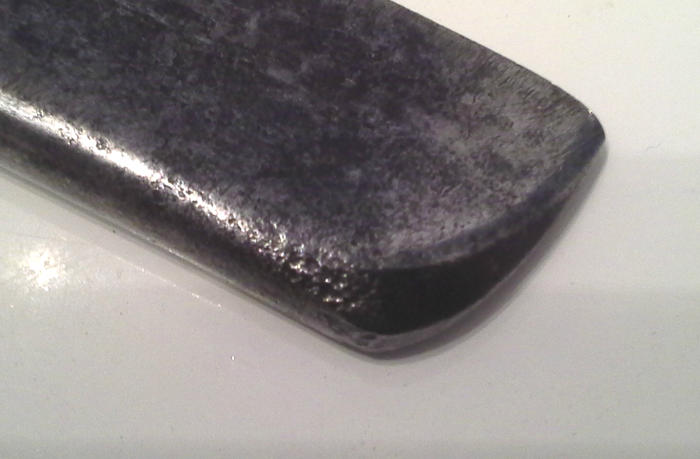Results 1 to 10 of 26
Thread: Newly arrived from England
Hybrid View
-
04-20-2014, 09:54 PM #1
 Newly arrived from England
Newly arrived from England
I bought this razor on the 'bay, mainly because I like the oblique point. The vendor didn't have much to say about it: "A vintage, English, black cased Straight Razor by 'Wood'. It is marked 'Wood, York'." I haven't been able to find any info on the manufacturer so far.
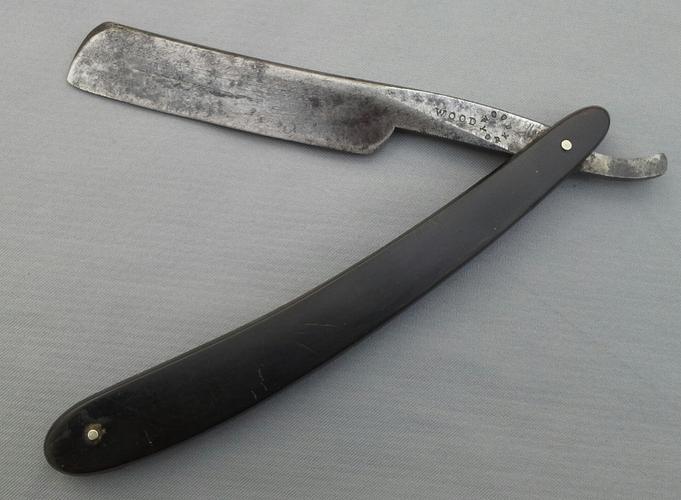
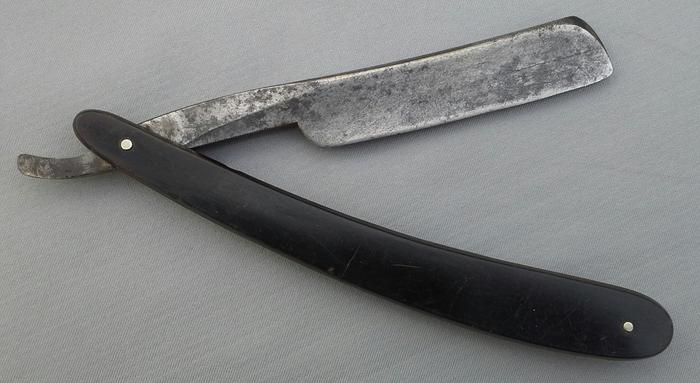
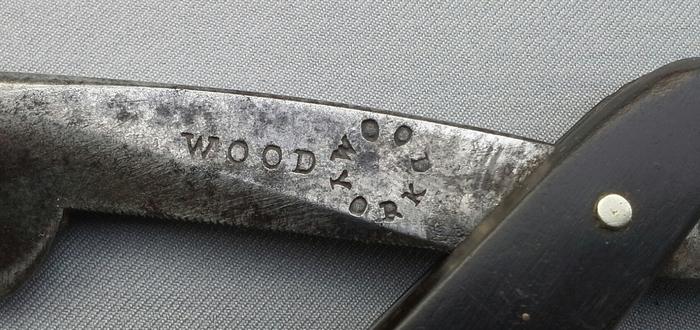
I was expecting a wedge grind, but it turns out that there's just a smidgen of hollowness to the blade, which measures just shy of 6/8ths, at 23/32nds. There are jimps below. There's no rust anywhere, and there's only a little bit of shallow pitting on the blade's faces, and a bit more on both sides of the spine at the point and on the shank; the rest of the blade is amazingly smooth! So, is the discoloration really just patina? The scales seem to be ordinary Bakelite.
My original plan was to make this my first effort at restoration; I figured that I couldn't mess up a wedge's geometry while hand-sanding; but a near-wedge? I've decided that I kind of like the patina, and am now thinking that I'll just try a little Flitz on it. My only concern is the pitting on the spine: it seems that it could damage my strop. But if I sand that off, I guess I'll have to do the whole blade, right?
Any advice on how to proceed will be appreciated!Last edited by Dzanda; 04-21-2014 at 01:36 AM.
-
04-20-2014, 10:17 PM #2

That's a nice blade and I wouldn't worry about your strop. I've never had any experience of pitting damaging a strop.
You could always make a paddle strop, right ? Ten bucks for a piece of leather glued on to a 3" x 17" piece of wood.
Maybe it's my poor eyesight, but I can't really see any pitting worth worrying about.
That should clean up just fine....http://straightrazorplace.com/workshop/18504-welcome-workshop-how-do-i-where-do-i-what-do-i-answers-here.html
-
04-20-2014, 10:34 PM #3
-
04-20-2014, 10:55 PM #4

Hey mate, I'm certainly no expert but I might start with a medium grit wet'n'dry, say around 400# or 600#.
You can always go lower if you feel you're not making progress....
Best to put your pics in the "Workshop" forum and you'll get a much more knowledgeable response.
I can't help with the manufacturer's history but Martin is one of the go-to guys who could
I've only seen one other example of this manufacturer:
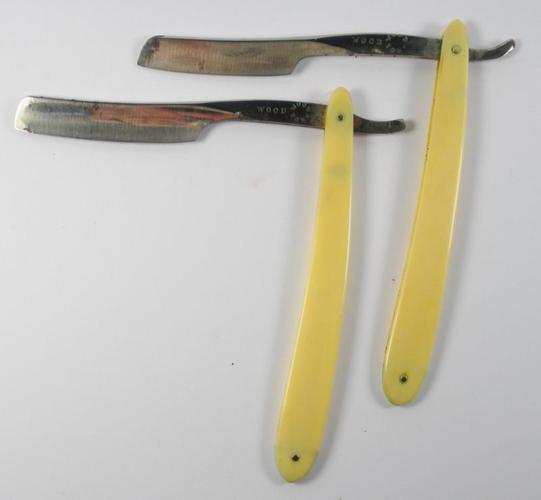
P.S. I always like to start a resto by giving the blade and scales a good soak in WD40 !!Last edited by bongo; 04-20-2014 at 11:11 PM.
http://straightrazorplace.com/workshop/18504-welcome-workshop-how-do-i-where-do-i-what-do-i-answers-here.html
-
04-21-2014, 01:18 AM #5

Lovely!
I'd guess those were made by Joseph Wood of York. He's listed in Baine's 1823 directory of York as: cutler, gunsmith and surgeon's instrument manufacturer in Spurriergate.
He was born 1775 in Bishopthorpe to Richard Wood and Elizabeth Prentice. In 1799, he married Elizabeth Stables at St. Michaels, Spurriergate. They had 8 children.
He died in 1843, aged 68.
Since it was made outside Sheffield's fashions, I'm a little bit at a loss to figure out when it was made, but It's very safe to say between 1823 and 1843! My guess would be early 1830's, but it's just a guess.
The scales are almost certainly black horn. In actual practice bakelite was pretty rarely used for razor scales. The most common black plastic used for scales was gutta percha, which is a kind of rubber. It was also called 'Ebonite' and it was very popular for things like mourning jewelry (in place of real ebony which was much more expensive).
I didn't even know there was a cutlery industry in York, and I'd never seen any of these razors. Awesome!
I wouldn't worry overmuch about the pitting on the spine. If you sand it down, you'll change the contact angle with the bevel, which could make honing a problem.-Zak Jarvis. Writer. Artist. Bon vivant.
-
-
04-21-2014, 01:23 AM #6Plausibly implausible





- Join Date
- May 2011
- Location
- Mount Torrens, South Australia
- Posts
- 5,979
Thanked: 485
I'd try and retain the patination, I think patina looks nice. And I'd agree I don't think the scales are bakelite. It looks like a nice razor...
Stranger, if you passing meet me and desire to speak to me, why should you not speak to me? And why should I not speak to you?
Walt Whitman


 49Likes
49Likes LinkBack URL
LinkBack URL About LinkBacks
About LinkBacks






 Reply With Quote
Reply With Quote
